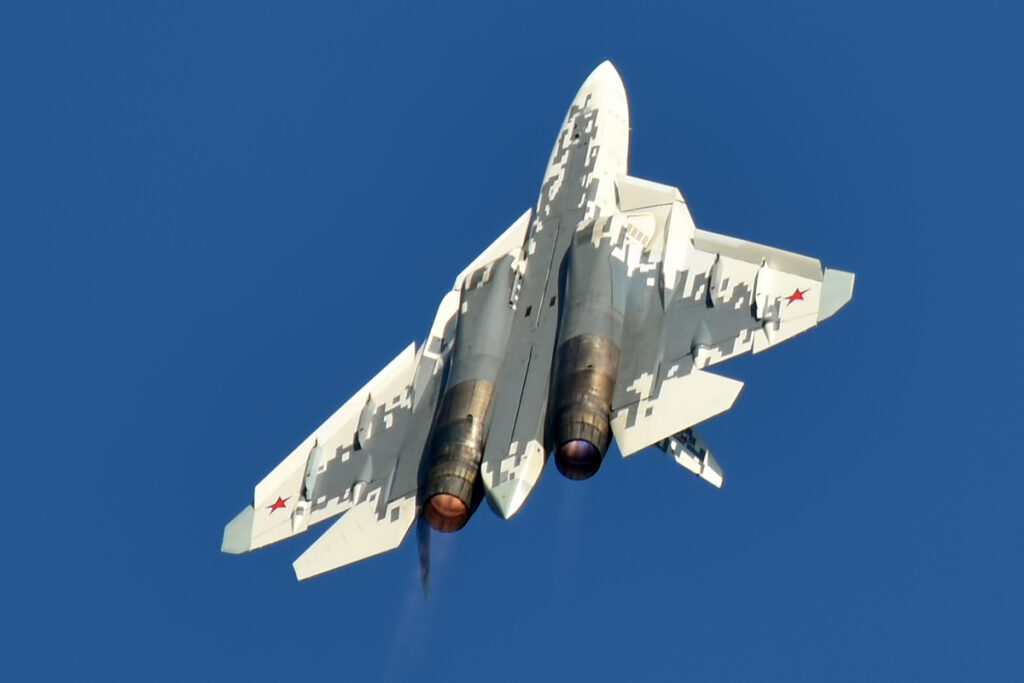
Russia had high hopes for its advanced military hardware at the inaugural Egypt International Airshow.

Despite continuing Western sanctions, Russia presented the export version of its fifth-generation stealth fighter at the air show – the Sukhoi Su-57E – though it did not have an actual Su-57E on display.
-1024x683.jpeg)
The Su-57E is a model tailored towards countries that cannot afford the American F-35 Lightning II. Moscow’s strategy is to balance out the high research and development costs of the Su-57 by selling it to foreign buyers.

The United Aircraft Corporation (UAC) and Rosoboronexport rolled out a scale model of the Su-57E in hopes of capturing regional partners and other interested nations.

Alexander Mikheev, head of Rosoboronexport, is referring to the importance of the event for the consolidation of technical-military cooperation between Russia and Egypt as well as other countries in Africa and the Middle East. “Our presence here will help strengthen technical-military cooperation between Russia and Egypt, as well as further develop relations with countries in Africa and the Middle East, whose combined share in the company’s order books exceeds 50%”.

Besides the Su-57E, Russia also demonstrated its air defense systems, the Pantsir-S1M and Tor-M2E, along with demonstrating the Orlan series of unmanned aerial vehicles (UAVs).

Of course, however, undoubtedly the biggest absence from the airshow was the Su-75 Checkmate stealth fighter.

The Su-75, skipping the Army 2024 exhibition outside Moscow, appears unable to get out of the conceptual phase.

Meanwhile, a long-time friend of Russia, Algeria has shown interest in Russian military hardware. There have been reports indicating that Algeria operates a Su-57 but no confirmation has ever occurred.

The acquisition of the Su-75 Checkmate for Algeria would enhance its capabilities greatly and strengthen it significantly in the region.

India, another key player in the defense domain, has also been aggressively marketing its BrahMos supersonic cruise missile at most international defense exhibitions, including the recently held World Defense Show in Saudi Arabia. The multi-national BrahMos, which is an Indo-Russian joint venture, has garnered quite an interest from a few other countries such as Saudi Arabia. Praveen Pathak, Director of Exports at BrahMos Aerospace, feels that this time around negotiations with the Saudi side appear to be more positive.

This ambition has been vocally reiterated through offering to sell BrahMos missiles worldwide, most recently an agreement valued at $375 million as a defense contract comprised of selling such missiles on land, sea, and air platforms into the Philippines.

Despite the hurdles in the development of the Su-75 Checkmate, as long as US sanctions and the Ukraine crisis persist, Russia continues to seek collaborations.

Military expert and former Indian Air Force pilot Vijainder K Thakur had earlier stated that the joint venture of the Su-75 with Russia could help India bridge the capability gap and attract more export customers to their defense.

An effort by both Russia and India to develop new, higher-tech military hardware and sell it with the help of their combined muscle power reveals how the global defense market remains a battlefield for competition and strategic maneuvering.